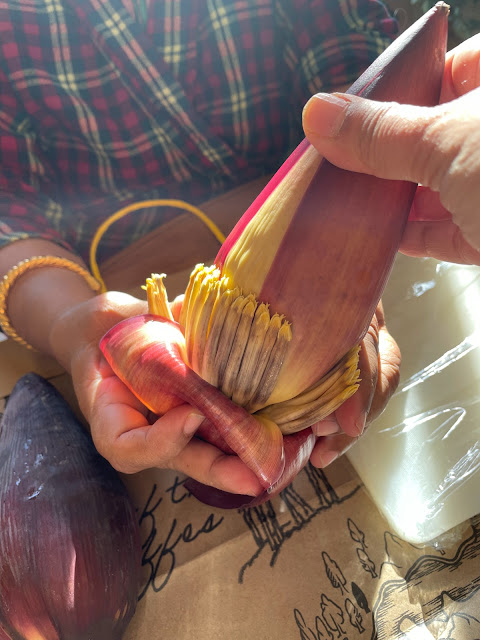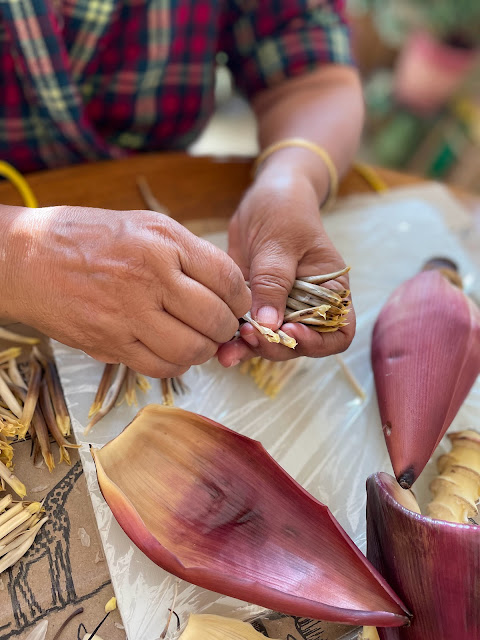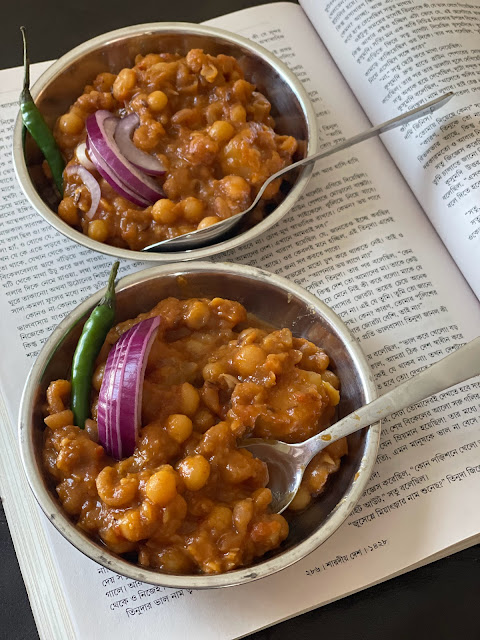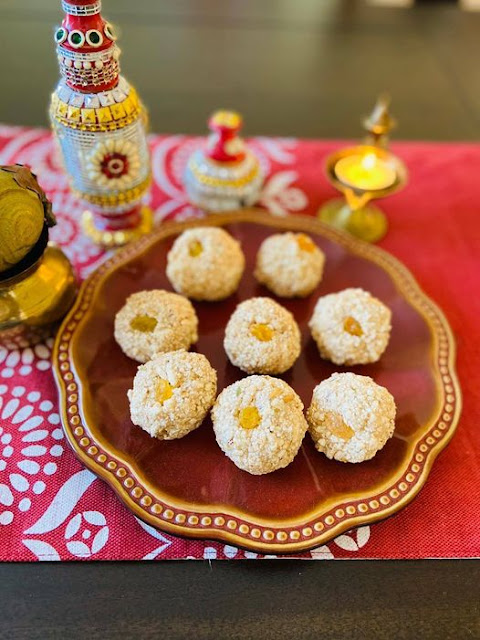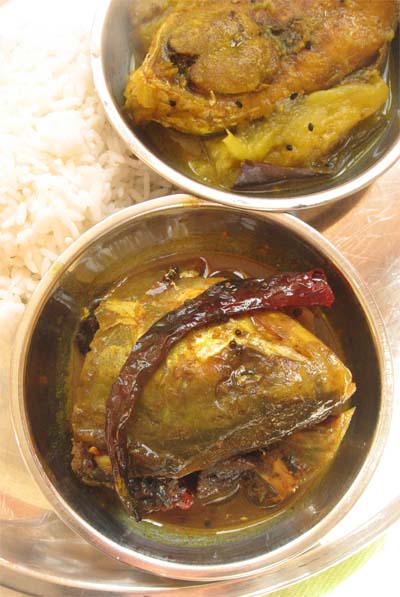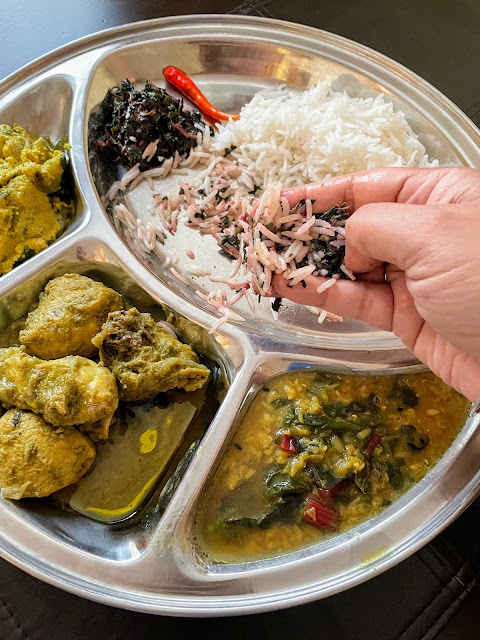Mocha r Ghonto | Banana Blossom Curry
Mocha, banana blossoms is a favorite vegetable in Bengal. The flowers of the Banana tree, Mocha, often served as Mochar Ghonto, Mocha r Paturi or Mochar Chop represent the very pinnacle of niramish Bengali ranna. The most complex part of this dish is not the cooking. It is prepping the blossoms and getting them ready that is a tedious process. Here I have created a video and shared a recipe of my Mother's Mocha r Ghonto, a dish that I dare to make only when she visits us
It is almost half way through the first month of 2023 and already I have given up on all my resolutions. So that way I am on track:-p.
My mother leaves for India by end of the month and I had plans to document and write some of her special recipes which I never cook if I am by myself. I thought it would be a nice mother-daughter project. Instead I spent all my after-work evenings, drinking tea and watching Didi No. 1, Dadagiri and Sa Re Ga Ma Pa with her. I will miss this a lot when she leaves -- a cup of piping hot tea ready every evening, muri chanachur and watching all the Bengali Game shows on TV together.
I do honestly think, I will cherish this time I spent with her much more than cooking and video recording her recipes.
Of the few recipes that I did happen to note is MOCHA r Ghonto. Not Moka. but Mocha where ch sounds like chair.
Mocha, banana blossoms is a favorite vegetable in Bengal. In fact in Bengal, a banana plant is much revered. During DurgaPujo, she is the designated wife of Ganesha and lovingly addressed as "KolaBou" and after Pujo, the Banana leaf is used to wrap the Bengali's famous fish and make Ilish Paaturi
The raw banana is another favorite in Bengali cuisine and kaachakolar kofta is high up in culinary ladders jostling with the likes of kosha mangsho. The tender core of the banana stems, the apparent trunk, is another nutritious vegetable favorite in Bengali cuisine. It is is called "Thor", not the Nordic God, but as impressive. The flowers of the Banana tree, Mocha, often served as Mochar Ghonto or Mochar Chop represent the very pinnacle of niramish Bengali ranna.
I have no patience to clean and chop Mocha when by myself so this is one thing we eat only when my Mother visits us. You see, chopping Mocha (banana blossom) in the seclusion of your own home, in isolation does not make sense. It needs a community to efficiently peel, remove stamen, and chop Mocha with efficiency and speed.
My Mother says, these days in Kolkata, you get Mocha peeled and chopped at the local vegetable sellers which is very convenient as in the whole Mocha cooking process, the chopping is the most tedious part. So if you are in Kolkata life is definitely easy for you.
We got small sized Mocha at our Indian store this time, not very ideal but had no time to go and search in other stores. But try to get a good size Mocha. The best tasting Mocha dish is made from Garbo Mocha which is bigger and the inflorescence is plumper and meatier.
My favorite Mocha dish is Mocha r Ghonto where banana blossoms are cooked with little cubed potatoes, kala chana and grated coconut, Flavored with ghee and gorom moshla this dish has a unique fragrance and tastes delicious with rice.


